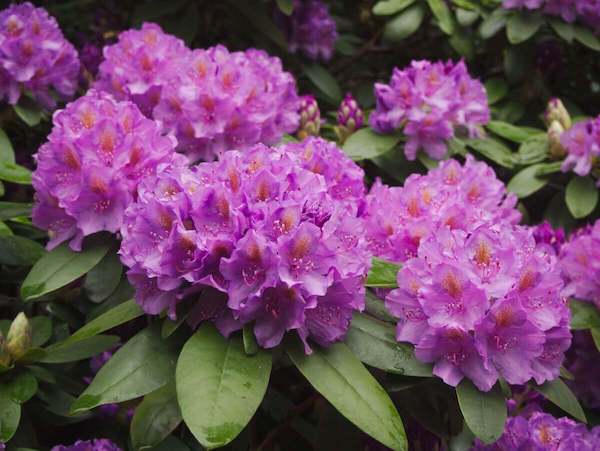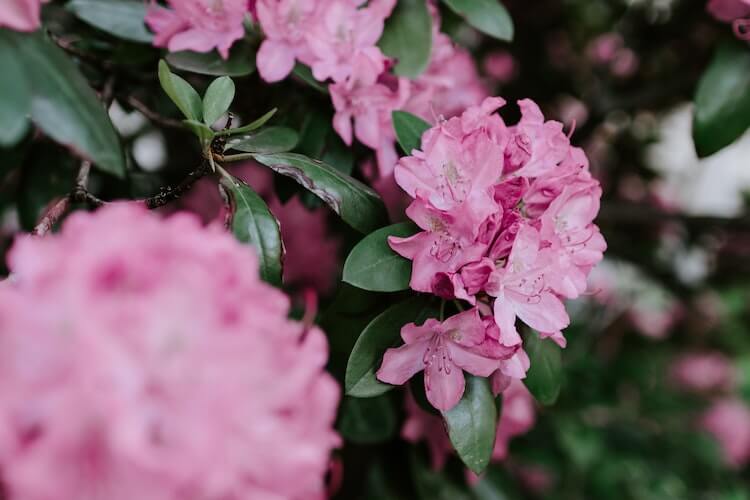
“I have become the red Rhododendron,
I bloom all over the forest, I bloom in the hearts of people….
…. If it isn’t all happiness, I will bloom in sadness too…. “
This is the literal translation of a very famous old Nepali song. Rhododendron finds mention in the poem named “Rhodora, On Being Asked, Whence Is the Flower “by Ralph Waldo Emerson, a 19th Century American poet and essayist to James Joyce’s “Ulysses”, to Author Ella Higginson’s “The Rhododendron Bells” (1898), to various literary works across centuries and across boundaries.
If you are born high up in the hills and mountains, the first memory of an exotic flower will thus be the Rhododendron that blooms in wild abandonment.
Rhododendron (derived from the Greek Rhodo – rose and Dendron – tree) is a very large genus of nearly 1024 species of woody plants in the heather family – Ericaceae, either evergreen or deciduous. Most species have brightly coloured flowers that bloom from late winter through early summer. The diversity of this species is generally consistent with the distribution of the Himalayas / Mountains. The largest number of diversities is prevalent in the Sino – Himalayan region, South-Western China, including Nepal, Bhutan, Northeast India, Myanmar, South-East Tibet Sichuan, and Yunnan. Those found in other parts of the world like Northeast Asia, Europe, Caucasus, and North America have much lower species diversity.
Different species hold different significance in different regions. The red bloom (Lali Guras in local Nepalese language) is the National flower of Nepal, some other species are – the state flower of Washington and West Virginia, the provincial flower of Jiangxi in China, the state flower of Sikkim and Uttarakhand in India to name some.
Despite the immense significance it attaches itself to, no other Country has a Festival named after it, other than Bhutan of course. Rhododendron trees and flowers have long adorned the trekking trails in Bhutan and other parts of the Himalayas, enthralled and fascinating the trekkers, botanists, explorers, and enthusiasts alike. Bhutan’s wild and wonderful rhododendron blooms elevate the already stunning Bhutanese landscape to something spectacularly surreal. Though Bhutan’s National flower is Blue Poppy, Rhododendron still holds that special place.
Rhododendron Festival – one of its kind, takes place in the Royal Botanical Garden (Lampelri) 35km from Thimphu, en route to Punakha. The festival is supported by the Forest Department & Park Services as well as The Tourism Council of Bhutan. In her book “Wild Rhododendrons of Bhutan” Botanist Rebecca Pradhan in 1999 listed 46 species of Rhododendron found in the Country, out of which about 40 species are said to be found in this park (29 species which grow naturally there, and 11 more species planted separately in the park garden). Spread across 47 square miles in the Dochula Conservation area, the park is rich in biodiversity and is a natural habitat for the Countries numerous flora and fauna.

The festival is spread across three days during the peak spring month (April mostly) which marks the blooming of this beautiful flower across the country. The events highlighted in the festival include the display and exhibition of the varied species in full bloom in their natural habitat, guided walks in the park, local culture and cuisine, arts and crafts, cultural programs, traditional games and more.
This is an honest effort to not only celebrate the species but also conserve them for posterity. In the time and age, where nature itself is in a threatened space, Bhutan is one country that puts nature first, with its four national parks, Wildlife sanctuary and Nature reserves, Bhutan strives to educate the people on the importance of conservation and preservation of its rich natural resources. The fact that almost 72% of the country’s total land area is under forest cover corroborates this. About 60% of the plant species in the Eastern Himalayas are concentrated here. The abundance of exotic varieties of flora and fauna thus makes Bhutan one of the top ten biodiversity hotspots in the world.
Today, Rhododendron is grown commercially in many parts of the world for sale. Both species and hybrids are used extensively as ornamental plants in landscaping. The flowers have been used in making local beverages (fruit & flower wines, juices, jams, syrups, honey, and teas), flowers are also consumed in pickled form and are widely used in herbal medicines for treatments of various ailments.
But it’s the willfully wild blooms that light up the trekking trails or adorn the high forests that captivate us still. As the poet, Ralph W. Emerson rightfully says “Rhodora! if the sages ask thee why this charm is wasted on the earth and sky, Tell them, dear, that if eyes were made for seeing, then beauty is its own excuse for being …”